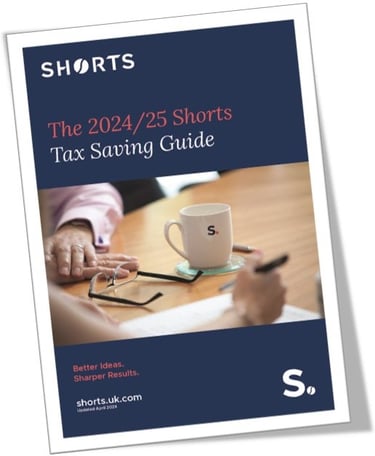.jpg)
In April 2025 the UK Government announced changes it wanted to make to the Capital Goods Scheme. Initially proposed to reduce admin for businesses, especially those, handling large capital assets, these changes will have a wide-ranging impact on VAT.
What is the Capital Goods Scheme?
The Capital Goods Scheme (CGS) is a mechanism used to adjust the amount of input VAT recovered on certain capital assets, based on changes in their taxable use over time.
These adjustments are made during a defined ‘adjustment period’. If the proportion of taxable use of an asset changes during this period, the amount of input tax reclaimed must be revised accordingly.
Spring 2025 tax update: simplification of the CGS
In the Spring 2025 Tax Update, the government announced plans to simplify the Capital Goods Scheme by updating the requirements to join the scheme:
Land, buildings, and civil engineering work
Currently expenses of this nature are covered by the scheme if the value exceeds £250,000 (excluding VAT). Under the proposed changes, the threshold will increase to £600,000.
Computers and computer equipment
Presently, expenses of this nature are included in the scheme if the cost of individual items is £50,000 or more (excluding VAT). This category will be removed from the scheme as part of the government’s simplification measures.
Aircraft, ships, boats, and other vessels
These assets are included in the scheme when the value of purchase, construction, refurbishment, fitting out, alteration, or extension exceeds £50,000 (excluding VAT). No changes are proposed for this category.
These changes are intended to reduce the number of capital items subject to adjustments under the scheme, thereby lowering the administrative burden—particularly for small businesses. The implementation date for these changes has not yet been confirmed.
Determining the value of a capital item
The value of a capital item is determined by reference to the total business and non-business expenditure on an asset. Here, only the VAT-exclusive value of the standard and/or reduced-rated taxable supplies are considered. Note that for land, buildings, and civil engineering work, additional considerations may apply.
How is the adjustment period monitored?
Initially, input VAT is reclaimed following normal VAT and partial exemption rules. The asset’s use is then monitored at regular intervals to assess whether any change in taxable use has occurred, which could trigger a VAT adjustment.
The adjustment is calculated using a specific formula, and the adjustment period depends on the type of asset:
- Land and buildings: 10-year adjustment period
- All other capital items: 5-year adjustment period
When does the scheme not apply?
The scheme does not apply if:
- Assets are acquired solely for resale
- Expenditure is made on assets solely intended for resale
- Assets are wholly used for non-business purposes
What records do you need to keep?
You must keep the following records for each capital item:
- Description of the item
- Value of the item
- VAT incurred
- Input tax reclaimed
- Start and end dates of each adjustment interval
- Dates when adjustments are due
- Date and value of disposal, if applicable
How long do you need to keep records?
- Minimum requirement: 6 years
- For assets with a 10-year adjustment period: Keep records for 10 years
Make sure you comply with CGS
The Capital Goods Scheme can still have unintended consequences, such as unexpected clawbacks, business restructures, and more. Our guide on CGS covers the potential pitfalls in more detail, and our VAT team at Shorts are happy to discuss a business's circumstances in more detail in a consultation.

Lynne Gill
My area of expertise is land and property transactions but I have extensive knowledge of both domestic and international VAT and I love complex VAT queries. I have an Honours degree in Business Studies and a VAT legal and technical qualification from the Institute of Indirect Taxation.
View my articles

